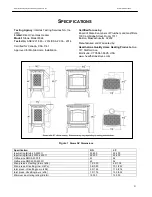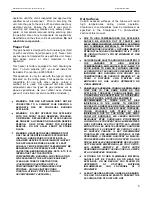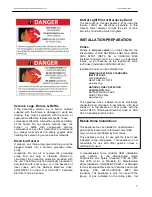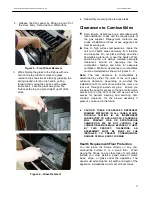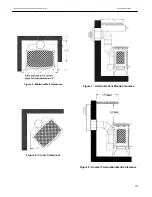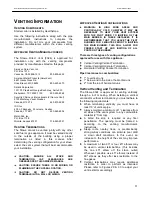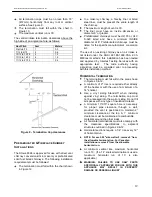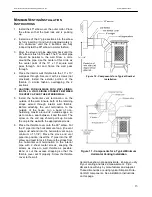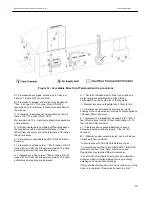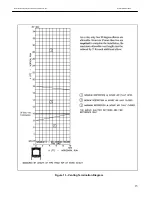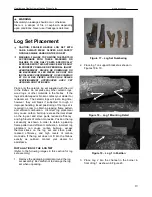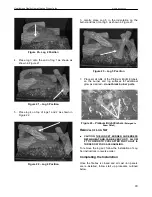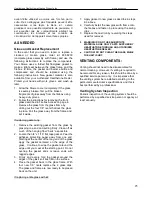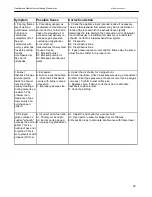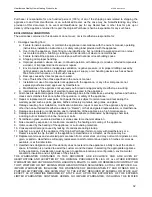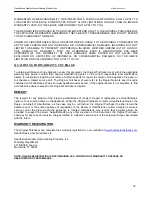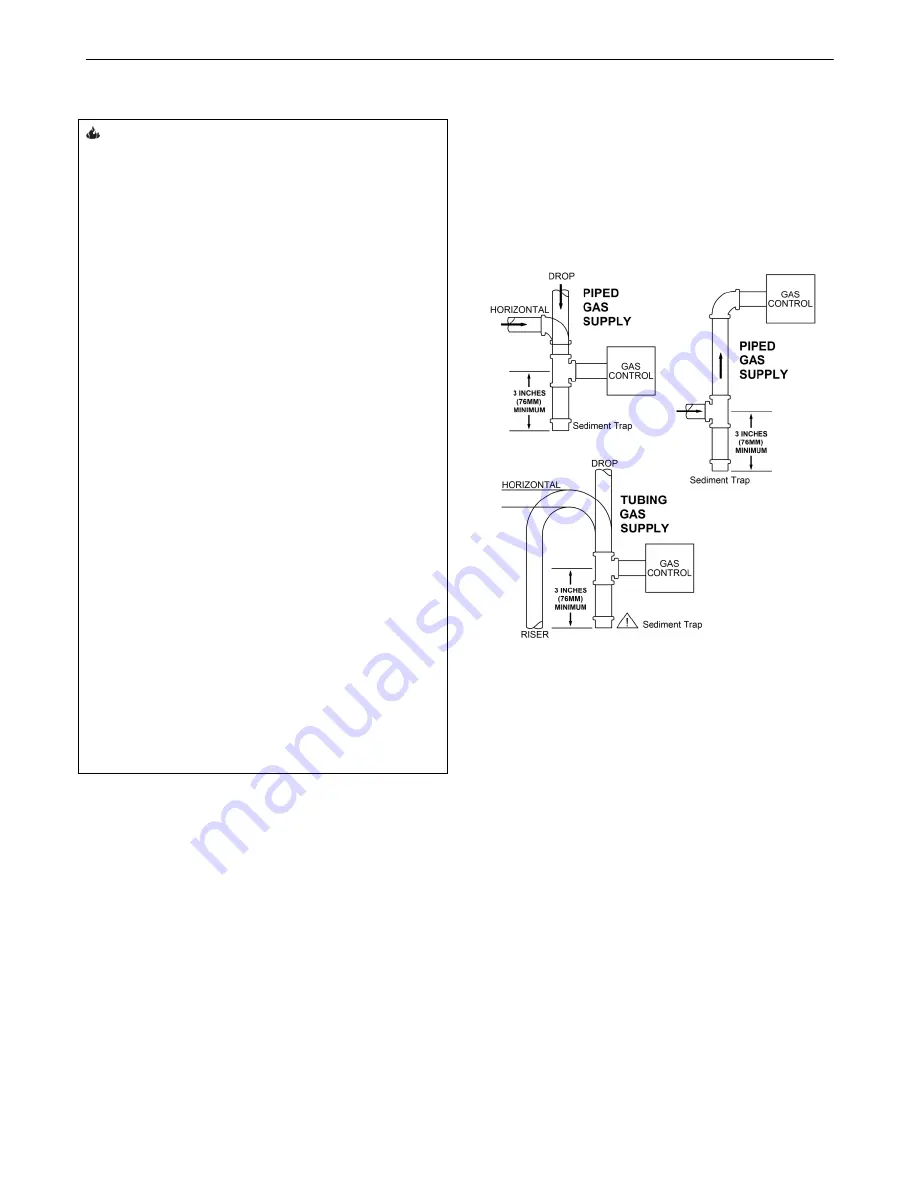
Hearthstone Quality Home Heating Products, Inc.
STOWE Model 8324
18
WARNINGS
Fire or Explosion Hazard. Can cause property
damage, severe injury,
or
death. Do NOT bend
tubing at gas valve connection point after
compression fitting has been tightened. This
can result in gas leakage at the connection.
Use new properly prepared pipe free from metal
or material chips. When tubing is used, assure
that ends are square, de-burred and clean. All
tubing bends must be smooth and free of
distortion.
Do NOT over tighten connections.
Over tightening can damage the control body
resulting in leakage or control malfunction.
Do NOT remove screws from the gas valve
.
Do
NOT adjust and/or alter any components
marked with tamper indicating paint. Motor
knob is not to be removed.
Turn off gas supply at the appliance service
valve before starting installation, and perform a
Gas Leak Test after the installation is complete.
Install the sediment trap (where required) in the
gas supply line to prevent contamination of the
gas valve (
see figure 16
).
Use only your hand to push in or turn, the
gas Control knobs. Never use tools. If a
knob will not push in or turn by hand, do
NOT try to repair it. Call a qualified service
technician. Force or attempted repair will
void warranty and can result in a fire or
explosion.
GAS CONNECTIONS
Connection Main Gas (Tubing connections)
1. Do NOT use pipe joint compound or
Teflon®/PTFE tape.
2. Slip nut and ferrule over
tubing.
3. Slide nut and ferrule into place, and insert
tubing into inlet/outlet connection until it
bottoms. Turn until finger-tight.
4. Use a wrench to tighten nut about 1 turn beyond
finger tight.
Connection Main Gas (Pipe Connections)
1. Do NOT use Teflon®/PTFE tape.
2. Pipe to be inserted into the valve must be the
proper thread length and to gauge. Thread
that IS cut too long can cause distortion or
malfunction if inserted too deeply.
3. Apply a moderate amount of approved
pipe\sealant to the pipe only, leaving the
two end threads bare.
1. Connect pipe to valve inlet and outlet.
Figure 16
– Sample Gas Supply Sediment Traps
PERFORM INITIAL GAS LEAK TEST
1. Check carefully for gas leaks immediately after
the appliance has been installed and the gas
turned on.
Do this before attempting to operate
the appliance or other gas burning device.
1. Use an approved non-corrosive leak detection
fluid, or other approved leak detection method,
around the diaphragm flanges, pipe connections,
seal cap, and all other joints. Bubbles indicate a
leak.
2. If no leakage is detected, proceed with the
instructions listed on page 21 to light the main
burner and perform a secondary leak check of
the appliance gas supply system.
5. If a leak is detected, tighten pipe connections
(including adapters) according to "GAS
CONNECTIONS" (page 17).

